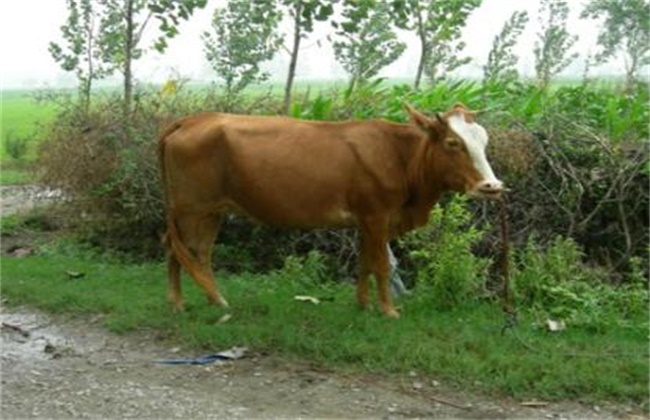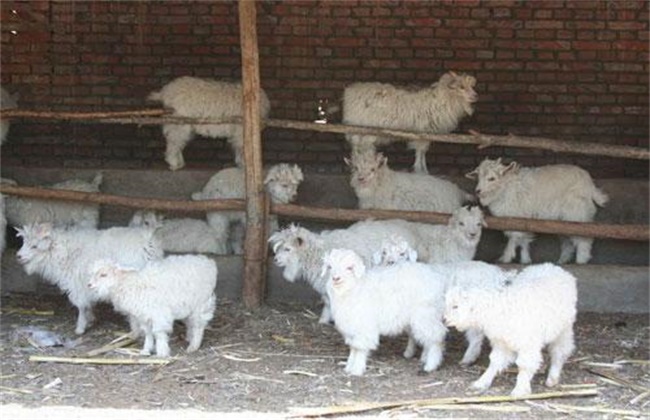Causes and control measures of salt poisoning in beef cattle
Salt is not only an inseparable item in our daily life, but also is often used in the aquaculture industry. It must be in a period of high temperature and heat. Many cattle and sheep farmers will feed salt to prevent heat stroke. But what should we do if the carelessness of feeding causes salt poisoning of cattle? Let's take a look.

1. Causes of salt poisoning in beef cattle
The main component of salt is sodium chloride, which is a necessary substance for animal metabolism. Adding a certain proportion to feed can stimulate appetite, promote metabolism and accelerate growth and development. However, if overfeeding or improper feeding, there will be poisoning, after poisoning, a small amount of salt will enter the blood, most of which exist in the intestines and stomach, leading to inflammation. Randomly increasing the amount of food during feeding will also cause poisoning. In the low temperature season, cattle farms often use shed feeding to supplement concentrate and salt, and the cattle are not stirred enough to feed freely. As a result, some strong cattle are easy to overeat and be poisoned. In addition, the lack of drinking water in beef cattle is also a cause of salt poisoning. Cows can also be poisoned if they are fed with a normal amount of salt during lactation.
2. Poisoning symptoms
When salt enters the blood, it will lead to an increase in the content of sodium ion and chloride ion, which leads to the phenomenon of over-excitement and paralysis of nerve function in clinic. The more severe beef cattle will show excessive excitement, erect ears, round eyes, frightened eyes, accelerated breathing, typical abdominal breathing, a small amount of clear nose flowing out of the nostrils, mild salivation in the mouth, and the body temperature is basically normal. The heartbeat increases and the muscles of the extremities tremble, especially the femoris and gluteus muscles. Then suddenly fell to the ground half-lying, regardless of the head and tail, eyes half-closed and half-open, falling into a lethargy.
3. Preventive measures
It is necessary to ensure adequate drinking water for beef cattle, especially for Muyao during lactation, and for parturient cows and high-yield cows during lactation, the amount of salt should be limited during feeding. When feeding cattle to the residue and waste water at home, the amount must be properly limited and fed with other feeds. Cattle with no salt can be set up to allow free feeding, and cattle can only be fed as needed. Cattle are more sensitive to salt and should be fed from a small amount to a sufficient amount when giving salt.
4. Treatment measures
At present, there is no specific detoxification agent, mainly to dilute the concentration of salt in the body and blood, accelerate the excretion of salt, and promote the balance of cations in the blood. Gastric lavage can be taken for sick cattle, and a small amount of water can be supplied many times to dilute the concentration of salt. If sick cattle show neurological symptoms, they should be injected intravenously and intramuscularly. If their own conditions are insufficient, it is recommended to call a veterinarian.
The above is the introduction of the causes and prevention measures of salt poisoning in beef cattle. I hope it can help you. If you want to know more about it, please follow us.
Related
- On the eggshell is a badge full of pride. British Poultry Egg Market and Consumer observation
- British study: 72% of Britons are willing to buy native eggs raised by insects
- Guidelines for friendly egg production revised the increase of space in chicken sheds can not be forced to change feathers and lay eggs.
- Risk of delay in customs clearance Australia suspends lobster exports to China
- Pig semen-the Vector of virus Transmission (4)
- Pig semen-the Vector of virus Transmission (3)
- Five common causes of difficult control of classical swine fever in clinic and their countermeasures
- Foot-and-mouth disease is the most effective way to prevent it!
- PED is the number one killer of piglets and has to be guarded against in autumn and winter.
- What is "yellow fat pig"? Have you ever heard the pig collector talk about "yellow fat pig"?



